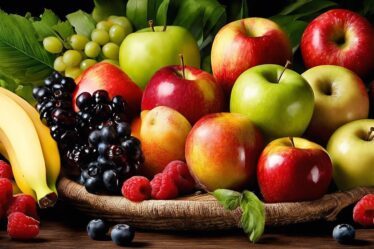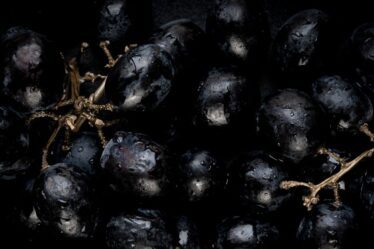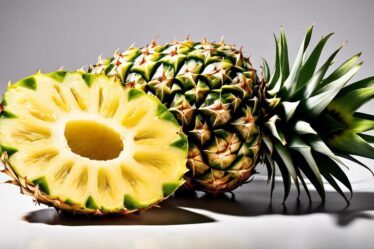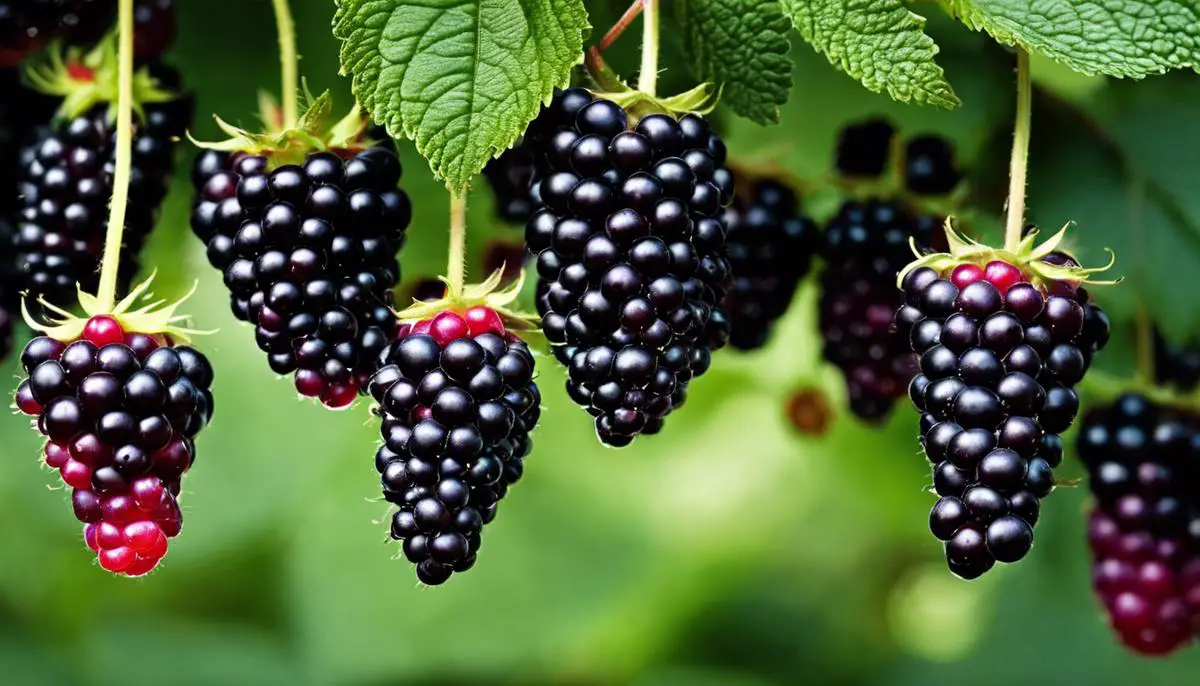
In the realm of luscious berries, boysenberries hold a memorable spot with their unique flavor profile and deep, mesmerizing color. A miraculous fruit with an enchanting history, boysenberries have emerged from the brink of disappearance to claim their rightful place in the culinary world. This fascinating journey, from the experimental gardens of Rudolph Boysen to tables across the globe, is a testament to the resilience and universal appeal of this beloved berry. Delving a step further, boysenberries not only please our palates, but elevate our health with their rich nutritional profile. Their myriad of culinary applications, along with the joy and fulfillment of growing them on your own, makes boysenberries more than just a fruit. They are a testament to the cyclical nature of food trends, a powerhouse of nutrients, and a versatile culinary star.
History of Boysenberries
Boysenberries Unearthed: The Bursting Flavor that Transformed America’s Fruit Landscape!
Boysenberries, friends, may seem like just another variant among the sprawling berry family, but what if we told you their delightful narrative is as fascinating as the juicy, sweet, tart flavor they bring with them? A fascinating crossbreed of blackberries, raspberries, and loganberries, the boysenberry boasts an intriguing story of creation that run-ins with the theme of American perseverance, innovation, and zeal for culinary discovery. So, hold tight as we voyage back into history, chatting all things boysenberry!
It all started back in the 1920s when a California horticulturist, Rudolph Boysen, set the wheels in motion for our favorite berry. Ever the curious epicurean, Boysen dared to experiment, fusing together parent strains of blackberries, raspberries, and loganberries. His vision came to fruition in the form of a beautifully big, succulent berry, distinct in taste and character — the boysenberry was born!
But, even the most delightful creations have their trials. Boysen’s nursery met a fate of neglect after an accident left him unable to tend his garden. The boysenberry vines lay languishing, their potential lost in the intricate labyrinth of weeds and neglect. The tale would have ended there had it not been for George M. Darrow, a USDA representative who had heard of Boysen’s berry hybrid experiment. Armed with a sense of curiosity, a love for botany, and a knack for culinary exploration, Darrow set off on a search to rediscover the seemingly vanished boysenberry.
Joined by berry grower Walter Knott, the duo finally stumbled upon the forgotten vines of the boysenberry at Boysen’s old farm, overgrown but resilient, waiting to reveal their flavorful potential to the world. Knott, captivated by these large, lustrous berries with their unique tangy-sweet taste, decided to cultivate boysenberries at his farm in Buena Park, California, propelling the berry to newfound fame.
Knott’s Berry Farm, as it’s known today, became the springboard for the boysenberry’s claim to culinary fame. Walter Knott chose not to patent the boysenberry, ensuring it’d be a public treasure. A tangible testament to the flavorsome fusion of raspberries, blackberries, and loganberries, the boysenberry started its sweet dance across the tongues of berry enthusiasts everywhere in the 1930s.
This humble berry forever changed the American berry landscape, giving rise to various culinary creations like boysenberry pies, jams, syrups, and even becoming a star feature at theme parks and farmers’ markets! Its rich, sweet, and tingy flavor welcome a versatile spin on many culinary experiments, from desserts and beverages to classic savory dishes.
Wrapped in its fascinating past and rich, flavor-packed goodness, the boysenberry stands today as a chaotic mishmash of berries, a fruit that emerged from obscurity and found its place in America’s heart (and palate!). With a history threaded with resilience and culinary innovation, this sumptuous fruit surely invites us all to explore deeper into the world of vibrant flavors, a gastronomic adventure of epic proportions! The boysenberry, friends, is more than just a fruit – it’s a celebration of taste and history colliding.
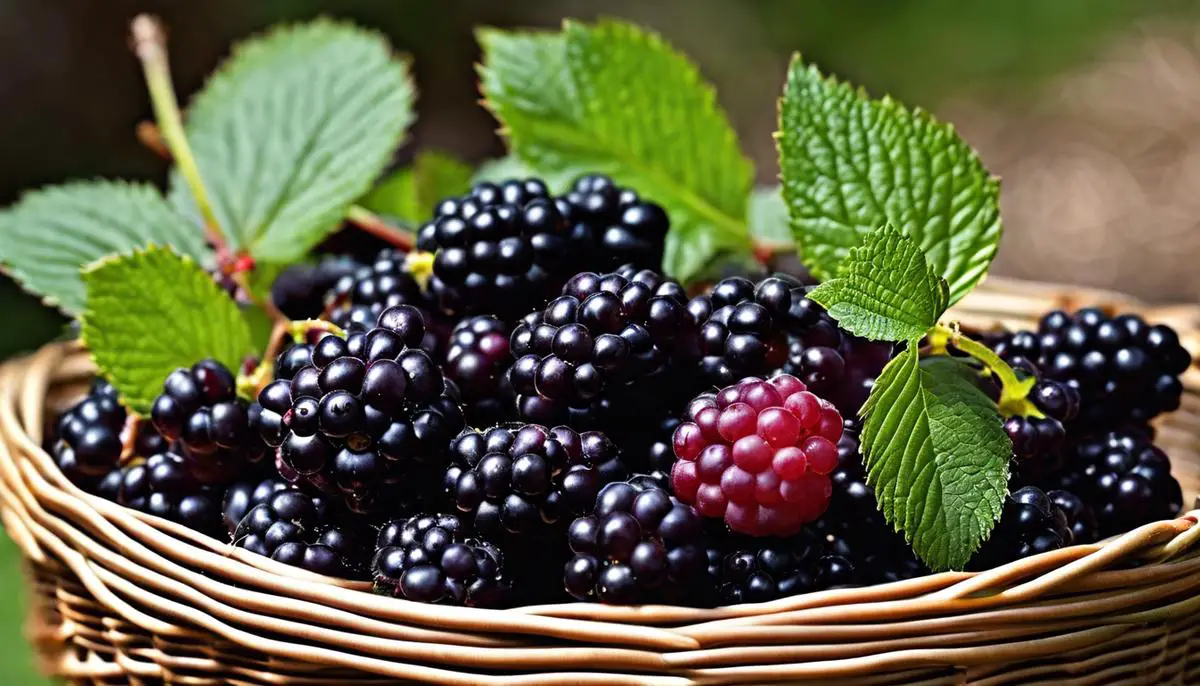
Nutritional Value and Health Benefits of Boysenberries
Delving into the sphere of gastronomical neutrality, boysenberries go beyond their storied history and incredible versatility. These delectable berries bring a wealth of health benefits to the table, making them a fantastic addition to your favorite recipes or as a new experimental ingredient in your kitchen attempts.
The power of boysenberries as a health advocate starts with their rich antioxidant profile. Just like other berries, boysenberries offer a myriad of antioxidants, including anthocyanins, ellagic acid, and resveratrol. It’s a common knowledge among food enthusiasts that these components help fend off damaging free radicals in our bodies, reducing inflammation and the risk of chronic diseases.
Moreover, boysenberries are plump with essential nutrients. Packed with folate, vitamin C and vitamin K, these berries contribute to overall well-being. Vitamin C acts as a powerful immune-booster, folate assists in cell growth and functioning, while vitamin K plays its crucial role in blood clotting processes and bone health. A burst of these vitamins in every bite ensures you are not only indulging in a tasty treat but also doing a favor to your body.
Boysenberries also contain high levels of dietary fiber. This might be one of the lesser glam aspects of this humble berry, but the advantages of a fiber-rich diet cannot be overstressed! Fiber is well-known for promoting a healthy digestive system, helping maintain heart health, and can even assist in weight loss goals by providing that feeling of fullness and reducing food intake.
For those looking to manage their blood pressure, boysenberries are a gift. The ruby-red berry is an exceptional source of potassium, an essential mineral that helps to relax the walls of blood vessels, thereby reducing blood pressure and protecting against related complications such as stroke or heart disease.
Moving into the territory of brain health, researchers have found that consuming boysenberries can provide significant cognitive benefits. The antioxidants in these berries help to boost brain health, potentially staving off conditions like Alzheimer’s disease and dementia. Moreover, they contribute to mental sharpness and memory enhancement – proving food can be brain fuel too!
Lastly, but certainly not least, boysenberries provide eye health benefits. Packed with lutein and zeaxanthin; two carotenoids well-documented for their protective effects on the eyes. Regular consumption may even help reduce the risk of macular degeneration and cataracts, common vision issues that come with aging.
In conclusion, boysenberries provide a powerhouse of health benefits. They prove their worth beyond their delightful and unique, slightly tart yet sweet flavor. They truly encompass the beautiful connection between food and well-being. So, no matter whether it’s a steaming hot boysenberry pie, a creatively mixed cocktail, a dash of sauce in your meat preparation, or simply enjoying the berries as a fresh and wholesome snack, remember you’re not just satisfying your taste buds. You’re also doing something good for your health too. With such a wealth of advantages tucked into its vibrant hue, it’s no wonder that the boysenberry holds such a quintessential place in culinary tradition. Here’s to the celebration of this undervalued, but nutritionally-charged berry!
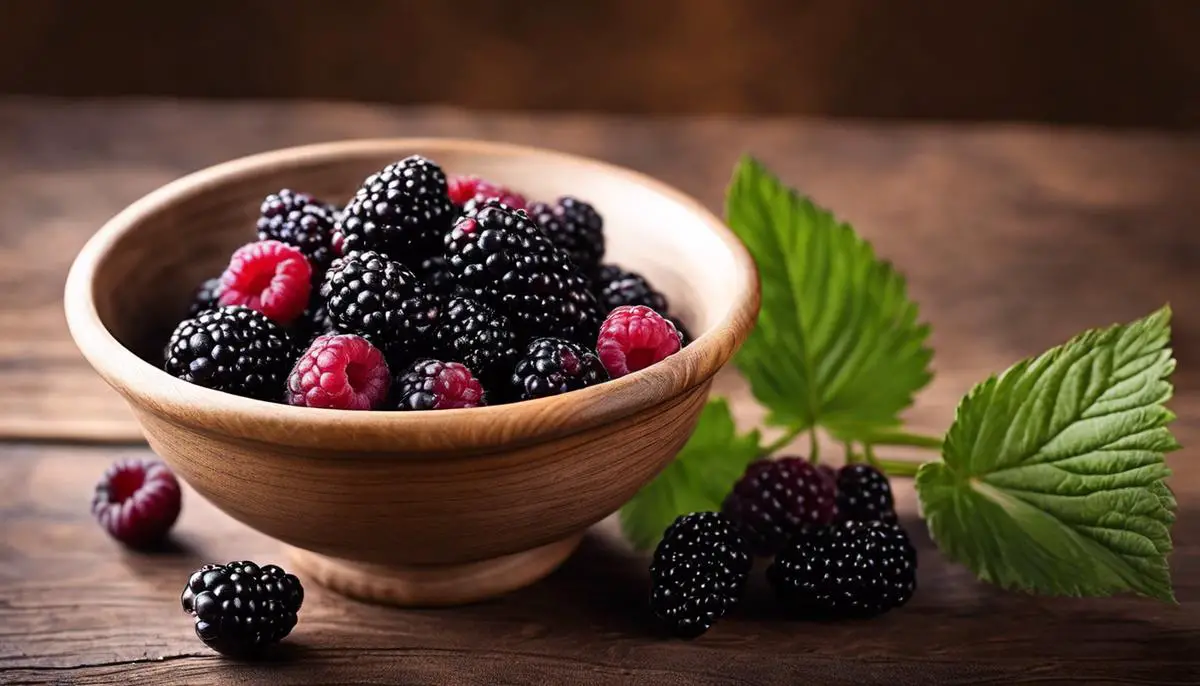
Culinary Uses of Boysenberries
Fresh, dried, preserved, or baked into your favorite desserts, boysenberries indeed pack a flavorful punch, as well as deliver an array of health benefits. They bring color, taste, and nutrition to any dish, making them a wonderful jewel in a home cook’s arsenal.
Boysenberries effortlessly augment both sweet and savory recipes. Their unique, tangy-yet-sweet flavor profile has the charisma for meandering over various ingredients, whether we’re talking about exotic cheeses, smoked meats, or even zesty arugula salads. Drizzle a boysenberry vinaigrette sauce over your next salad, and witness the transformation as the flavor notes of the berries balance perfectly with the elements of the salad. Add them fresh or as part of a glaze on grilled meats, and ignite a delectable fruitiness that marries well with the savory succulence.
Their silken sweetness sings harmoniously with desserts too. Imagine a cheese tart adorned with boysenberry compote – the creaminess of the cheese and the fruity sweetness of the boysenberry come together to create a symphony of flavors. Or, some boysenberry macarons, where they lighten up the biscuit’s richness, leaving a tantalizing aftertaste that beckons one for more.
Not to be left behind, beverages find a resonating mate in boysenberries too. Juices, smoothies, wines, and even cocktails, can derive an amped-up sophistication and elegance when fused with the ripe, sweet-tart flavor of boysenberries. Try making a boysenberry margarita on a hot summer afternoon, and one may find the newfound appreciation for the berry’s sensual blend with Tequila and lime juice.
Boysenberries are also packed with a wealth of health benefits. The berries are a powerhouse of antioxidants; these play a role in detoxification and in protecting the body against damage caused by free radicals. This leads to decreased inflammation and reduced risk of chronic diseases like heart disease, cancer, and diabetes.
Nutraceuticals will be enthralled with the fact that boysenberries are an excellent source of vitamins C, K, and folate. Vitamin K is crucial in blood clotting and bone health, while folate is vital during pregnancy for preventing birth defects. Vitamin C, a potent antioxidant, is essential for boosting immunity, healing wounds, and maintaining healthy skin.
Dieticians frequently preach about the importance of dietary fiber, and boysenberries happen to be a good source of it too. Providential for aiding digestion, maintaining healthy heart function, and aiding in weight loss, the dietary fiber in boysenberries is certainly worth considering.
A mention worthy aspect of boysenberries is their rich content of potassium. Often diagnosed as a shortfall nutrient in the average American diet, potassium plays a crucial role in maintaining blood pressure and promoting cardiovascular health.
And for those of us that fancy exercising our grey cells frequently, here’s some food for thought: research suggests that the anthocyanins found in boysenberries could potentially benefit brain health, supporting memory and cognition.
To conclude, inviting boysenberries to grace our plates not only elevates the culinary experience but brings along a cornucopia of health benefits. These purple gems effortlessly narrate a tale where the love for food and the quest for well-being harmoniously coexist. Celebrate the flavors of this versatile berry and embrace the joys of cooking in a berry-licious style!
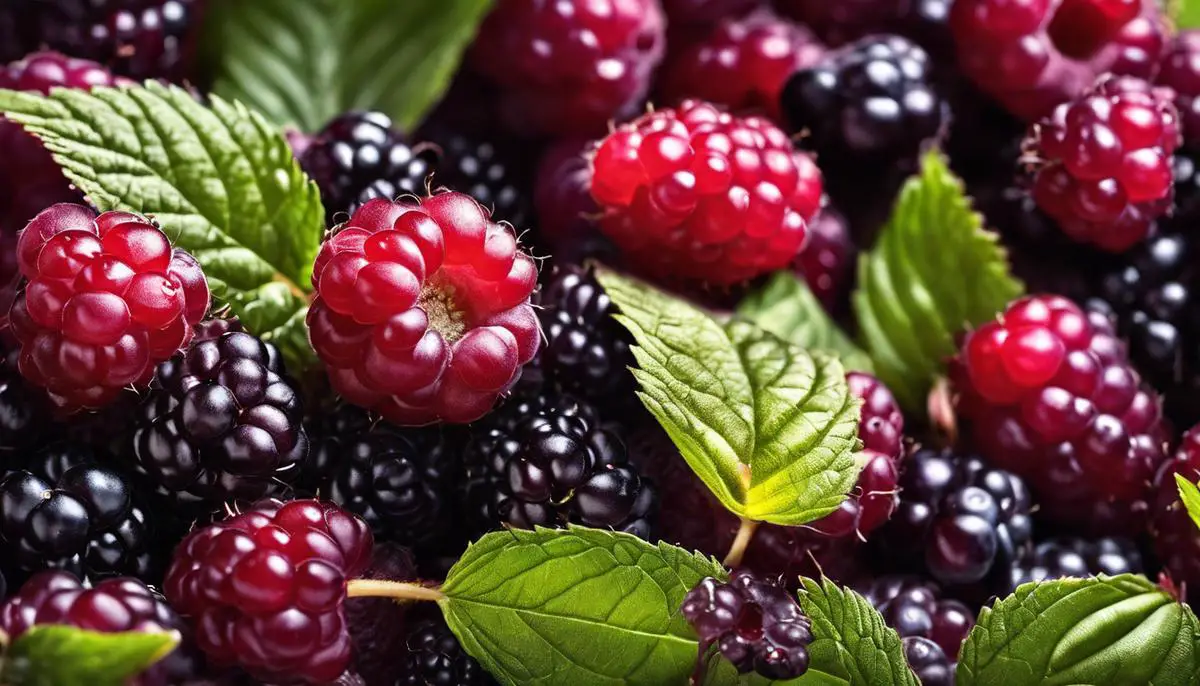
Growing and Harvesting Boysenberries
Let’s carry on our berry-strewn journey and focus now on how to grow your very own boysenberries. Push in those green thumbs and ride along this flavorful adventure. Boysenberries are trailing vine plants that surprisingly are perennial, implying our beloved berries will regrow every year without replanting. Now how exciting is that?
Preparing the grounds for your boysenberries might take some effort since these bramble bushes love a slightly acidic, sandy loam, and well-draining soil. But every foodie will tell you that the fruits of labor have never been sweeter – or juicier. Richly composted and thoroughly turned over soil will ensure that our little plantlings have a cozy home. In addition to sunlight, boysenberries crave some partial shade too.
The months of winter or early spring are ideal for planting boysenberry plants. Making sure that the canes are planted about 4-6 feet apart would provide them enough space to expand their growth. Usually, boysenberries, unlike other fruits, won’t produce bountiful harvests in their first year of planting – a little patience and the reward would be oh-so-sweet!
Let’s chat about watering now. A boysenberry plant would need about one or two inches of water per week, preferably in morning hours. This way, as a resourceful food-lover, you’re reducing the chances of diseases by restricting the amount of time the foliage remains wet. Remember, overwatering can lead to root diseases.
Pruning is a method where we agree with the phrase ‘less is more’. In late winter or early spring, prune the canes that have fruited in the past summer, while allowing the new growth to flourish for the upcoming season. This ensures a healthy and generous harvest.
Protecting your boysenberries from pests and birds would need the same attention as your preciously curated recipes. Installing a bird net before the berries ripen or using horticultural oils and insecticidal soaps could be beneficial. Pro tip – the vine’s thorns are a natural barrier against many pests, including deer.
Harvesting boysenberries should be done when they’ve turned a deep maroon color and can easily be pulled off the vine. It’s best to harvest in cooler temperatures, that is, early morning or late evening to extend the freshness.
Just like the guests we love to host, boysenberries are a pleasant addition to every culinary garden, giving huge rewards for a small space. Not only do they provide a source of delicious and nutrition-packed fruits that can be used in numerous dishes, but they also enrich the passionate cook’s connection with the food. Anyone can grow boysenberries, whether in a garden, in a pot, or even on a patio. So let’s put on those gardening gloves, and spin yet another stunning tale in our culinary journey!
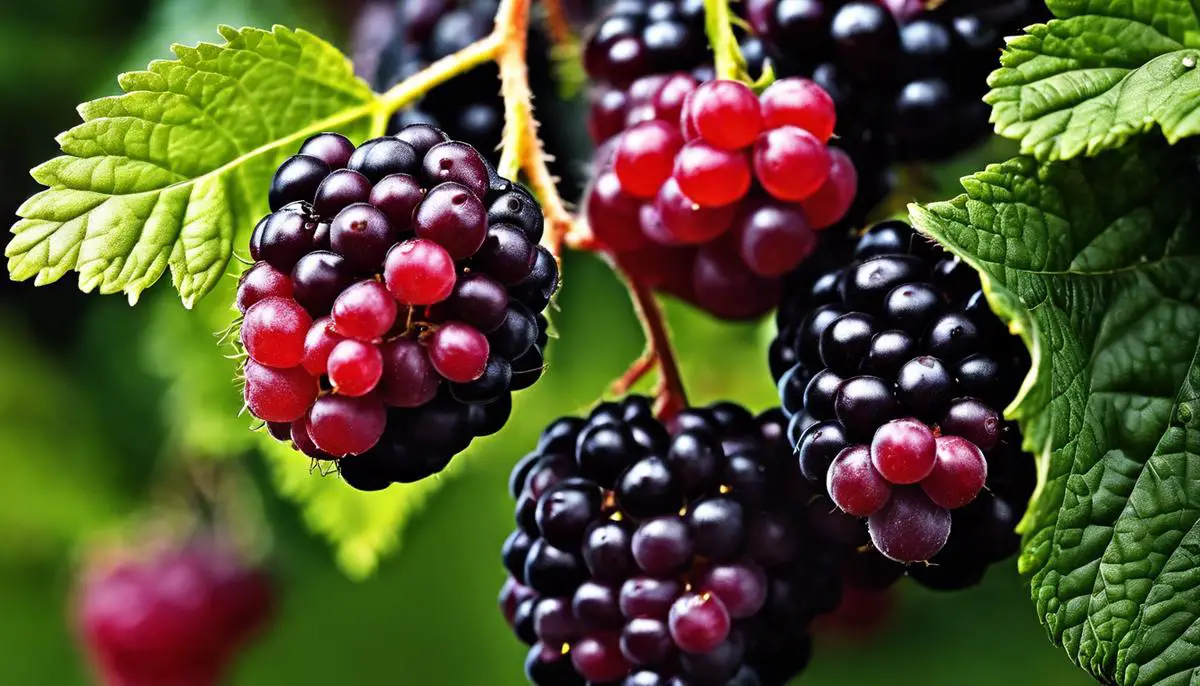
The captivating journey of boysenberries, from their humble beginnings to their esteemed status today, serves as a heartening reminder of the enduring appeal of good food. Even as we bite into the succulent juiciness of these berries, we are taking part in this cycle of resilience and revival. Boysenberries, with their impressive nutritional profile and health benefits, remind us that food can be both delicious and health-promoting. Moreover, the boundless culinary potential of these berries, whether in sweet desserts or savory dishes, inspire creative exploits in the kitchen. Finally, the experience of nurturing a plant from a seedling to a productive bearer of fruit makes enjoying boysenberries an even more satisfying endeavor. Boysenberries, if we take a closer look, are not just fruits. They are multi-dimensional, crossing over from our gardens to our kitchens, to our plates and ultimately, our hearts.

